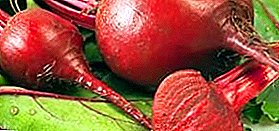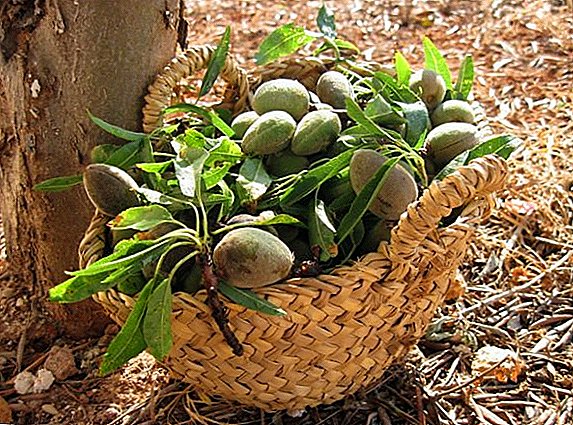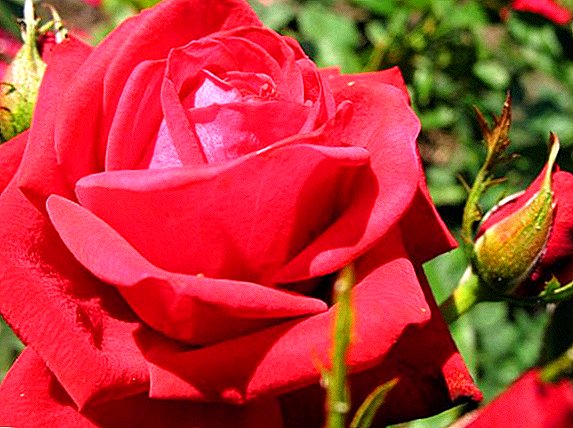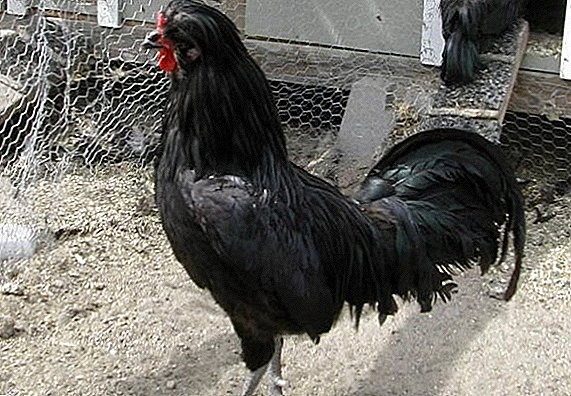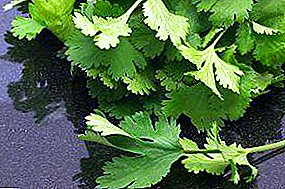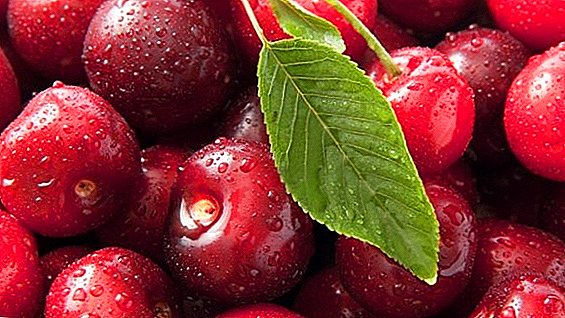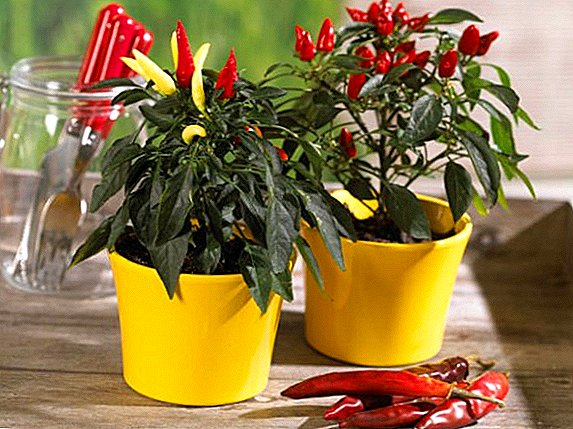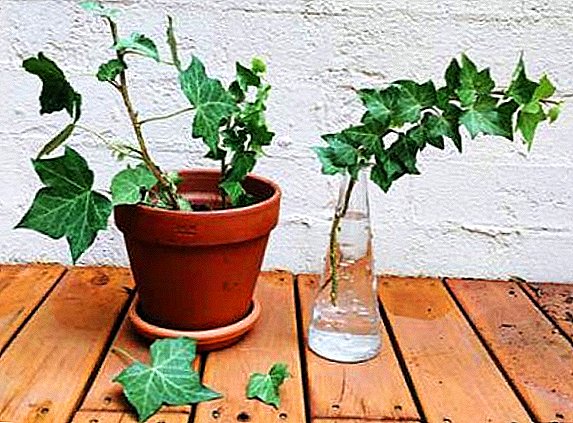 "Flower-bouquet", "flower spider" or just cleoma. Her love gardeners for the beautiful flowers of the original form and different shades. Even a peculiar aroma and a short life span are forgiven for it - in our latitudes, Cleoma is grown as an annual. But the beauty and simplicity of care outweigh these disadvantages.
"Flower-bouquet", "flower spider" or just cleoma. Her love gardeners for the beautiful flowers of the original form and different shades. Even a peculiar aroma and a short life span are forgiven for it - in our latitudes, Cleoma is grown as an annual. But the beauty and simplicity of care outweigh these disadvantages.
Growing Cleoma Sprouts
Cleome - A very beautiful plant, planting and caring for it will not be a big deal. Since the plant is an annual, it is grown by sowing seeds. Sometimes they are scattered directly into the ground in November or December or in the spring. But experienced gardeners recommend cultivating cleoma through seedlings.
Did you know? Cleoma has a high peduncle up to 100 cm long. From above it is crowned with flowers collected in the racemes. Inflorescences can grow up to 20 cm in diameter. The flowers themselves are relatively small - up to 3 cm in diameter. One pedicle looks like a full-fledged bouquet, which is why the glue is often called a “flower-bouquet”.
 Planting material can be purchased at any flower shop. Mostly offered for sale grade colored fountain. When buying seeds and studying the packaging, pay attention not only to the photo of inflorescences, but also to the time of collection of seeds. Ideally, they were collected last year, as later ones may not climb.
Planting material can be purchased at any flower shop. Mostly offered for sale grade colored fountain. When buying seeds and studying the packaging, pay attention not only to the photo of inflorescences, but also to the time of collection of seeds. Ideally, they were collected last year, as later ones may not climb.
Planting seeds for seedlings
Besides the fact that planting cleoma for seedlings will give greater germination, this method allows for early flowering. You can grow flower seedlings at home.
Important! The plant has a long growing season, and the question of when to plant the seeds of cleoma is unambiguously difficult to answer - it all depends on the time of harvesting the seeds. If you have collected them in the fall, you can only plant for seedlings by the end of February.
For sowing it is necessary to prepare suitable containers and soil. Sow the plant can be in the usual shallow colored pots or wooden boxes. The soil should consist of a part of sand, two parts of humus and two parts of garden soil.
 Before planting, seeds should preferably be treated with growth stimulants. To do this, they are soaked in a solution of "Epin" or "Zircon" for 12 hours. The solution is prepared by adding two drops of the drug in a glass of boiled water. This will speed up the process of seed germination, as well as facilitate the care of the plant in the future.
Before planting, seeds should preferably be treated with growth stimulants. To do this, they are soaked in a solution of "Epin" or "Zircon" for 12 hours. The solution is prepared by adding two drops of the drug in a glass of boiled water. This will speed up the process of seed germination, as well as facilitate the care of the plant in the future.
After sowing seeds in the ground in the hole about a centimeter deep, they should be sprinkled with earth about one and a half centimeters and covered with glass or transparent film to create a greenhouse effect.
Seedling care
Cleomed prickly about about three weeks after planting, if the seeds are not previously processed. Otherwise, the first shoots should be expected earlier. Good light is very important for young shoots, so the containers should be carried to a well-lit window sill.
Often use additional lighting in the evenings for a couple of hours with a fluorescent light. Water moderately, not allowing the soil to dry, but not pouring it. It is useful for the prevention of watering sprouts with a weak solution of potassium permanganate.
Did you know? Cleome is a large ornamental plant that is grown to cut and form bouquets, as well as decorations for tapeworms and mixborders. In the bouquet, the flower is able to maintain freshness for up to ten days. Most often, in our latitudes, cultivars are grown in such varieties as the Color Fountain, the Cherry Queen, and Champagne Splashes.
 When the sprouts extend over a pair of leaves, they can dive into peat cups. It is advisable to get the seedlings with a lump of earth, carefully deepening into a new soil - the plant does not like transplants.
When the sprouts extend over a pair of leaves, they can dive into peat cups. It is advisable to get the seedlings with a lump of earth, carefully deepening into a new soil - the plant does not like transplants.
Two weeks after these manipulations, you can feed the seedlings with a weak solution of mineral fertilizers and repeat this procedure every two weeks. Do not forget to gradually turn the containers with seedlings so that it develops evenly.
When you notice that the seedlings are actively growing, you can refuse additional lighting. Now the seedlings will need abundant watering.
Planting seedlings on a permanent place
Place for planting cleoma should choose a shaded, but with a lot of ambient light and without drafts. It should not stagnate water, the soil itself should be nourishing with a neutral reaction.
We need to take care of the soil in advance. At the beginning of May, it must be dug up with compost and complex fertilizers at the rate of two tablespoons per square meter. Seedlings should be planted in late May, when frost is no longer expected, or even in early June.
They are planted in the garden in rows in a 40x50 cm pattern. This is enough space for the flower to grow beautifully. In addition, this distance between the bushes is an excellent prevention of various diseases characteristic of thick planting.
 Before planting seedlings in open ground, it is recommended to spray it with a growth stimulant solution, for example, "Epin-extra" with Tsitov microfertilizer. This will help the plant to take root.
Before planting seedlings in open ground, it is recommended to spray it with a growth stimulant solution, for example, "Epin-extra" with Tsitov microfertilizer. This will help the plant to take root.
Seedlings are immersed in the ground with peat pots, following the above scheme. After under the root of each plant should be watered with a solution of "Humate".
Planting seeds of cleoma in open ground
The flower can be sown in open ground, but This should be done in late November or early December, then the first shoots will appear in early spring. To do this, make holes in the ground about half a centimeter deep, where the seeds are poured.
The holes are covered with earth, and the top is covered with spruce leaves or other material for shelter so that the seeds can survive the winter without damage. After the spring frosts shelter is removed. But we must be prepared for the fact that the seedlings will have to wait a long time - the cleoma has a long vegetative period.
Another option is toSowing the seeds in spring, when the last frosts have elapsed, the earth warms up sufficiently, the air temperature will become more constant (about mid-April).
 The advantage of this method of planting is that the plant does not require special care.
The advantage of this method of planting is that the plant does not require special care.
Seeds, especially overwintered, are hardened, adapted to climate and soil, and therefore feel good in it.
How to care for blooming glue
Caring for a flower grown from seedlings is also simple. It is sufficient to properly water and fertilize the cleoma. In the first case, it is necessary to be guided by the rule that it is better for the glue to be underfilled than to be poured - it is extremely difficult to tolerate excess moisture. Intensive watering is recommended only in extreme heat - plentiful, but not frequent.
The number and nature of dressings depends on the characteristics of the soil and the process of plant development. As a general rule, glue is fed every two weeks with a solution of "Fertika-Combi" or "Fertika-Lux" (for 10 liters of water 2 tablespoons).
They can also spray the plants if they grow poorly. To do this, prepare another mixture: Three teaspoons of the drug is dissolved in three liters of water. To accelerate the flowering of the plant before the formation of buds, it must be sprayed with a solution of "Zircon" (1 ml per liter of water).
Did you know? The flower of stunning beauty has a flaw. The smell of cleoma is not quite floral, intensely spicy, and not everyone will like it. In its natural habitat thanks to him, the plant attracts small bats for pollination. And in our environment, this smell scares off pests.
 Flower care also involves weeding the beds, mulching after planting, or loosening the soil, if you forget about mulching. If the cleoma was sown before winter, it requires minimal maintenance. Although in this case we must be ready for its late flowering.
Flower care also involves weeding the beds, mulching after planting, or loosening the soil, if you forget about mulching. If the cleoma was sown before winter, it requires minimal maintenance. Although in this case we must be ready for its late flowering.
Seed collection
Plant seeds harvested after the formation and maturation of the seed box. This usually happens in the fall. Maturity is determined by eye: the box should be about 1.5 mm in diameter and, depending on the color of the flowers, be brown or yellow.
Experienced gardeners recommend pre-tying seed boxes with gauze so as not to miss the moment of their disclosure, when all the seeds fall out on the ground.
Important! In our latitudes, spider cage, also called glue, is grown as an annual plant, so after the bush has faded, it must be disposed of in the fall. And in its place in November to sow the seeds to a depth of 1.5 cm. Crops are closed with spruce leaves, which is removed after the last frost in the spring.
The use of cleoma in landscape design
 The plant is used with pleasure by designers for the formation of mixborders, beds or for single cultivation.
The plant is used with pleasure by designers for the formation of mixborders, beds or for single cultivation.
It is planted with a cleoma as a background on a flower bed or for shading lower plants, used as a hedge. Sometimes a flower is sown on a large area to decorate large tracts of land.
In combination with glue, many plant species look good, both annual and perennial. It is well combined with pink and white echinacea, fragrant tobacco, tall varieties of zinnia, solar ore beck, lavatero, liatris, ibeyrikom.
Sometimes cleoma flowers are used to form bouquets, as they can be cut for more than a week when cut. But because of the specific flavor, such a move is rarely resorted to.
Disease Resistance to Cleoma
Due to the special aroma, pests rarely settle on the glue. But sometimes it can appear aphid. The main reasons for its occurrence are non-compliance with the agrotechnology of growing plants from seeds.
It is possible to diagnose the appearance of a pest by the stunted leaves of a plant that are lagging in development. Also about the presence of aphids says the absence of new shoots on the bush. To get rid of pests, spend spraying with special means on a cloudy warm day.
 Diseases also rarely appear on the glue. They may arise due to improper planting and care of the plant. For example, when the bushes are planted too close to each other and there is not enough airing.
Diseases also rarely appear on the glue. They may arise due to improper planting and care of the plant. For example, when the bushes are planted too close to each other and there is not enough airing.
Diseases can occur if you pour too much glue on the glue or if the wrong landing place is chosen - too close to the groundwater. For the rest of the plagues, the plant is very stable.
Cleoma - a beautiful plant with bright flowers of unusual shape, able to decorate any area. It pleases with flowering almost all summer and is completely unpretentious in care, so even beginners can cope with its cultivation.


